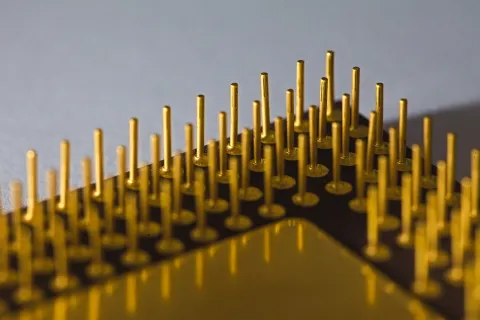Our future prosperity will always require innovation. What is TBED?
Innovation requires an openness to the possibility of doing things better.
Entrepreneurship is the urgent willingness to try.
~ Mark Skinner, SSTI President & CEO
For America's global competitiveness, our federal, state and local prosperity policies should increase the likelihood of success for more high-impact enterprises capitalizing on scientific and technological innovation. Technology-based Economic Development (TBED) is the field of policy and practice addressing this critical need. TBED is the bundle of public-private policies and programs that use scientific discovery, technology development, and creativity to move innovation through the formal and informal networks, organizations, institutions, and community that collectively comprise a regional innovation system.
TBED differs from conventional economic development by encouraging local growth based on innovation that, if the regional innovation system is working smoothly, can sustain economic opportunities for the region well beyond traditional strategies focused heavily on business/industrial recruitment and retention. TBED places stronger emphasis on creating new opportunities by nurturing the region’s innovation capacity or system, rather than recruiting companies from other regions.
Why focus on state & regional innovation systems?
Regional innovation systems across the country vary greatly in structure, effectiveness and efficiency at moving innovation into practice or commercial production. The overall success of a regional innovation system depends upon the quality of the individual assets within the particular region and the linkages between these elements locally and globally.
Sometimes regions require a little support.
Regional innovation systems often ignore local political boundaries. Instead, the constituent elements in an effective regional innovation system draw on participation from all aspects of a regional community (private, government, education, research, philanthropic, financial, civic, etc.). Innovation economies emerge, they are not made. Recognizing this distinction is a defining quality of using a systems approach to support innovation and regional prosperity.
Vibrant innovation economies require collaboration across public, private and nonprofit partners.
The specific character, culture and vibrancy of a regional economy emerges from the interplay of many dynamic, complex adaptive systems. Disruptions are a part of the process.
A well-designed regional innovation support system is but one set of actors to restore and sustain prosperity.
Bottom line: the effectiveness, efficiency and resilience of most regional innovation systems can be improved through public policy, program investments, and other strategic interventions. SSTI is here to help.

Useful Stats: Business R&D continues to consolidate in top states
With federal R&D investments unlikely to keep pace with inflation or international competition based on the administration’s budget request, cuts to existing research grants, and Congress’s inability to pass a budget, business R&D investments become more critical for sustaining the competitiveness of regional innovation economies.
SSTI's Key Technology Area Investment Tool
Venture, seed, and angel capital are the most common financial tools for growing tech-focused young companies, and so the number of investment-backed companies, number of investment deals, and amount of capital invested can all help indicate the vibrancy of a region's innovation economy. This data tool leverages PitchBook's platform to provide these measures at the state level by year and by investment stage for the 10 key technology-focused areas (KTFA) that have been defined by the 2022 CHIPS and Science Act and are important aspects of programs such as the Economic Development Administration’s (EDA) Regional Technology and Innovation Hubs (BBRs and Tech Hubs) and National Science Foundation’s (NSF) Regional Innovation Engines.
Upcoming Free Webinar!
Lab-to-Market subcommunity meeting: Exploring Innovation and Commercialization
January 20, 2:00 p.m. EST
Pushparajah Thavarajah and Mark Roth of the Clemson University Research Foundation will discuss their recent NSF I-Corps short course: Lean LaunchPad. This methodology helps researchers, students, and entrepreneurs learn how to evaluate the commercial potential of an idea.

Recent Research: How minimum wage increases shape the STEM workforce pipeline
College is often the time when students discover which career path they want to pursue, through coursework, internships, and hands-on experiences. New research examining state minimum wage increases, however, shows how budget pressures can disrupt access to these formative opportunities and ultimately affect who enters STEM careers.